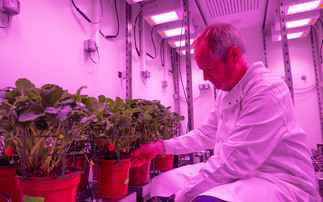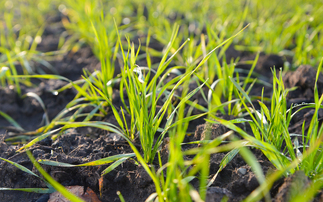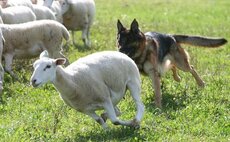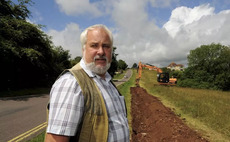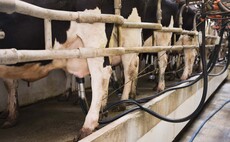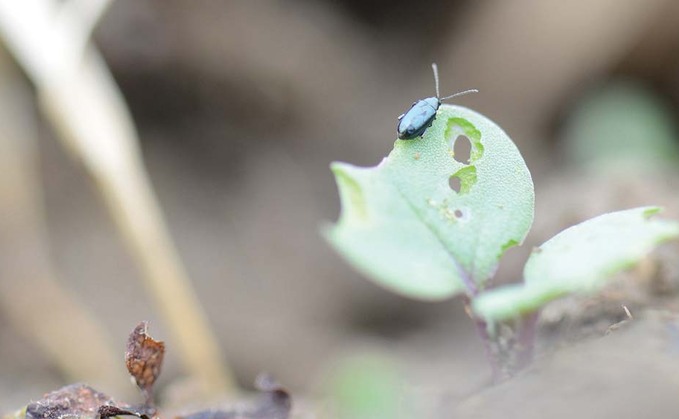
Targeting oilseed rape crops on more fertile fields and more extensive use of manures could help crops better cope with the challenges of cabbage stem flea beetle, says Suffolk farm manager, Simon Eddell.
Responsible for the 1,000 hectares of arable cropping and stewardship schemes on Rougham Estate, Bury St Edmunds, Simon Eddell says the influence of soil type and fertility to overcome damaging effects of flea beetle is particularly evident this spring.
"We certainly lost lots of little bits to the effects of cabbage stem flea beetle [CSFB] early in the season," he says.
"But the wider effect was shorter, stunted crops that suffered in the cold, early start to spring in March and held them back.
"That's when we could see the effects of fertility and soil, with nutrition helping with recovery of the crop." Mr Eddell firmly believes muck has a huge benefit for oilseed rape, both from improved soil structure for rooting and establishment, as well as nutrients to maintain consistent healthy growth.
Varieties
This season's experience has also seen hybrid varieties generally better able to cope with conditions and pest pressure, he adds.
"It has been noticeable that hybrid vigour has helped get plants growing away from the slow start.
We'll probably still grow a mix of conventional and hybrid varieties, but with more emphasis on hybrids."
Despite the establishment risks, Rougham Estate's oilseed rape area is likely to stay broadly the same for the coming season, since there really isn't any better alternative break crop available, he says.
"It still gives a timely entry for the farm's preferred early sowing of first wheat and, with relatively low growing costs, the gross margin can be rewarding, if you get it right."
Test covers
Syngenta iOSR research, which is aimed at reducing the impact of CSFB, has highlighted techniques which can successfully reduce larvae numbers.
Syngenta technical manager Georgina Wood highlights companion crops sown with the oilseed rape have been seen to reduce the to beetle infestation.
In the iOSR site trials, mustard was found to be effective in reducing spring larvae counts, especially when sown in the row at the same time as the OSR, with more than 50 per cent reduction in numbers.
When sown between the rows, the larvae reduction was a more modest 5%.
"Despite reducing the larvae numbers, competition from mustard, over a mild winter, severely affected yields - with up to 25% reduction compared to the crop with no companion, says Miss Wood.
"The plots with the greatest larvae reduction, actually yielded the lowest." The trial with an inter-row sowing of burseem, clover and buckwheat did show a promising 30% reduction in spring larvae counts with no adverse effect on yield.
"We can say larvae reduction doesn't always correlate to yield," adds Miss Wood.
Flail cuts yields
Flailing crops infested with CSFB can prove a highly successful technique to reduce numbers - cutting larvae counts by up to 60% in iOSR trials.
However, the physical damage to plants could hit , warns Miss Wood.
"Having removed the leaf canopy in November, the crop was also left vulnerably exposed to pigeon feeding over winter - particularly following a more severe double pass flail." Overall the flail treatments - one or two passes in November or one pass in February - did reduce larvae numbers by an average of 40%.
However, yields were also hit by an average of 38%, compared to the untreated plots.
Trials destroyed
This season's iOSR CSFB trials, set to be managed at ADAS Boxworth, Cambridge, had to be written off when destroyed successive sowings, reported Syngenta insecticide specialist Dr Max Newbert.
Now, Dr Newbert has planned trials for the coming autumn with a range of new techniques to evaluate, including the potential for a new OSR insecticide active.
It aims to target larvae in the crop and protect plants from damage, as well as reduce subsequent beetle numbers.
"However, we still need to get the crop established, where further iOSR growers' trials and YEN initiatives are focused on timing and establishment techniques too."
OSR Returns
Oilseed rape will remain an integral part of many combinable crop rotations, says Graham Redman of The Andersons Centre.
"In reality, the alternatives for many growers are not abundant, and mostly not particularly attractive agronomically or financially," he says.
"The market for OSR has not changed." In its Outlook 2020 report, Andersons calculated that, compared to wheat at £140 per tonne with a farm's break-even yield of 7.5t/hectare, oilseed rape on the same cost-structure at a value of £330/t would have to achieve a yield of 3.1t/ha across the planted area.
Over the past five years, for most, that would be readily attainable, Mr Redman says.
Importance
"This really emphasises the importance of and nurturing the crop to mitigate the effects of cabbage stem flea beetle for crop survival." Although some 25% of all oilseed rape was written off over the winter, it was an especially severe year, he says.
"We would not expect it this autumn. Indeed, write-off levels of 10% have typically been recorded in the previous two seasons; still a lot, but less severe.
Contribution
"Possibly reducing well-drilled OSR write-off to, say 5%, would make a significant contribution to the crop's returns and its value in the rotation," he highlights.
Green Power
iOSR grower James Fountain, Cambridgeshire, was looking to make the most of a good start with this season's crop, trialling an Amistar programme during flowering to prolong greening through to harvest.
It's part of a YEN-monitored field-scale trial, comparing one- and two-spray treatments.
Switching to all hybrid varieties at Delavals Farm, Whittlesey, this season, he's looked to get the crop up and growing away from CSFB and pest damage more consistently, and particularly for spring vigour.
The trials' DK Expedient went in during the first week of August, with good moisture, so it had a pretty good start, Mr Fountain says.
Plant counts taken in September averaged 38 plants/sq.m.
The YEN initiative previously pinpointed days of green area retention from flowering to harvest as a key factor in increasing yield.
When solar radiation availability data is logged against green area at the season's end, Mr Fountain's trial, along with that of iOSR grower Chris Eglington, Norfolk, will give a direct comparison of techniques for growers.


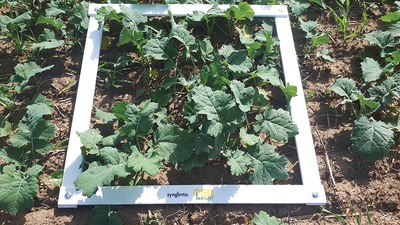


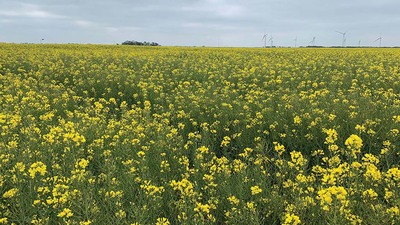
More from iOSR

For more on iOSR click here:





